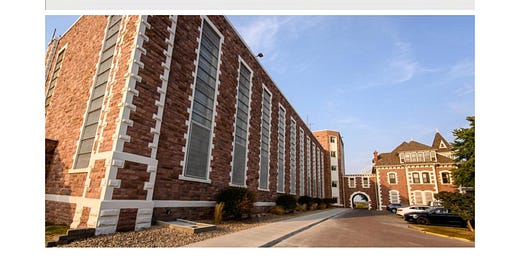From rocks to roadblocks: How prison construction became a costly controversy — then and now
A history of South Dakota's prison pursuits
The contrast between Dakota Territory's enthusiastic embrace of a $50,000 prison in 1881 and South Dakota's reluctance to fund an $825 million replacement in 2025 highlights shifting fiscal priorities and public attitudes toward prison construction across 144 years of state history.
Here’s a look back at the history of the prison in South Dakota and the discussions about building a new facility:
Dakotans want a territorial-state prison: 1877 to 1889
Early discussions about a territorial prison dated back to at least 1877, when the Yankton Daily Press and Dakotan reported Aug. 6 of that year: "It is the decided opinion of those who have gone into the mathematical details of this subject that it would be (economic) to build a territorial prison. The expense of transportation would be saved, the convicts by their labor could be made nearly self sustaining and the money paid out for their support would be kept in the territory."
A January 1878 editorial in the Press and Dakotan argued: "The construction of proper facilities for the confinement and rehabilitation of criminal offenders is not merely a fiscal necessity, but a moral imperative for a territory aspiring to join the Union as a full member. We cannot claim the mantle of civilization while outsourcing the maintenance of justice."
The Canton Advocate noted on Feb. 13, 1879, that "(Territorial Councilor Richard F.) Pettigrew's bill for the establishment of Territorial prison at Sioux Falls" had failed, though this was one of several attempts before final approval came with the 1881 legislation.
The Feb. 27, 1879, Daily Press and Dakotan criticized the legislature for failing to establish a prison: "The conduct of the councilman (Pettigrew) from Sioux Falls, since the defeat of the pet measure of the syndicate, have satisfied all fair minded men that he is not a fit representative of any decent community. Oaths and imprecations of the most sickening nature have fallen from his lips."
This is not the kind of scathing — borderline defamatory — editorial one would expect from most South Dakota newspapers today.
The editorial noted that when the territorial prison measure failed, "Sioux Falls men turned with vengeance in their hearts that he should be sent to the capital to represent the intelligence and virtue and honesty of a moral, high minded community."
There were also economic concerns then, as now.
"Each dollar spent housing prisoners in Michigan or Iowa represents resources forever lost to Dakota's economy," noted Territorial Treasurer John L. Pennington in his November 1879 report to the legislature. "A territorial penitentiary would convert this liability into an asset through prison industries and local employment."
The Dec. 27, 1879, Daily Press and Dakotan published the governor's annual report, stating: "In this connection I beg leave to call your attention to some of the more pressing needs of the territory," wrote Territorial Gov. William A. Howard. "Aside from the Missouri river, which, as territorial, is subject to national control, the wants of the territory principally center in a penitentiary, insane asylum, and university."
The report estimated the territorial population at "150,000 to 165,000," with approximately 20,000 new settlers arriving annually.
Keep reading with a 7-day free trial
Subscribe to The Dakota Scout to keep reading this post and get 7 days of free access to the full post archives.














